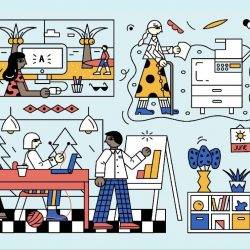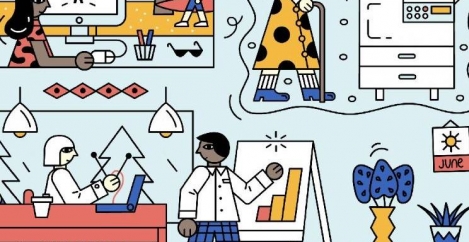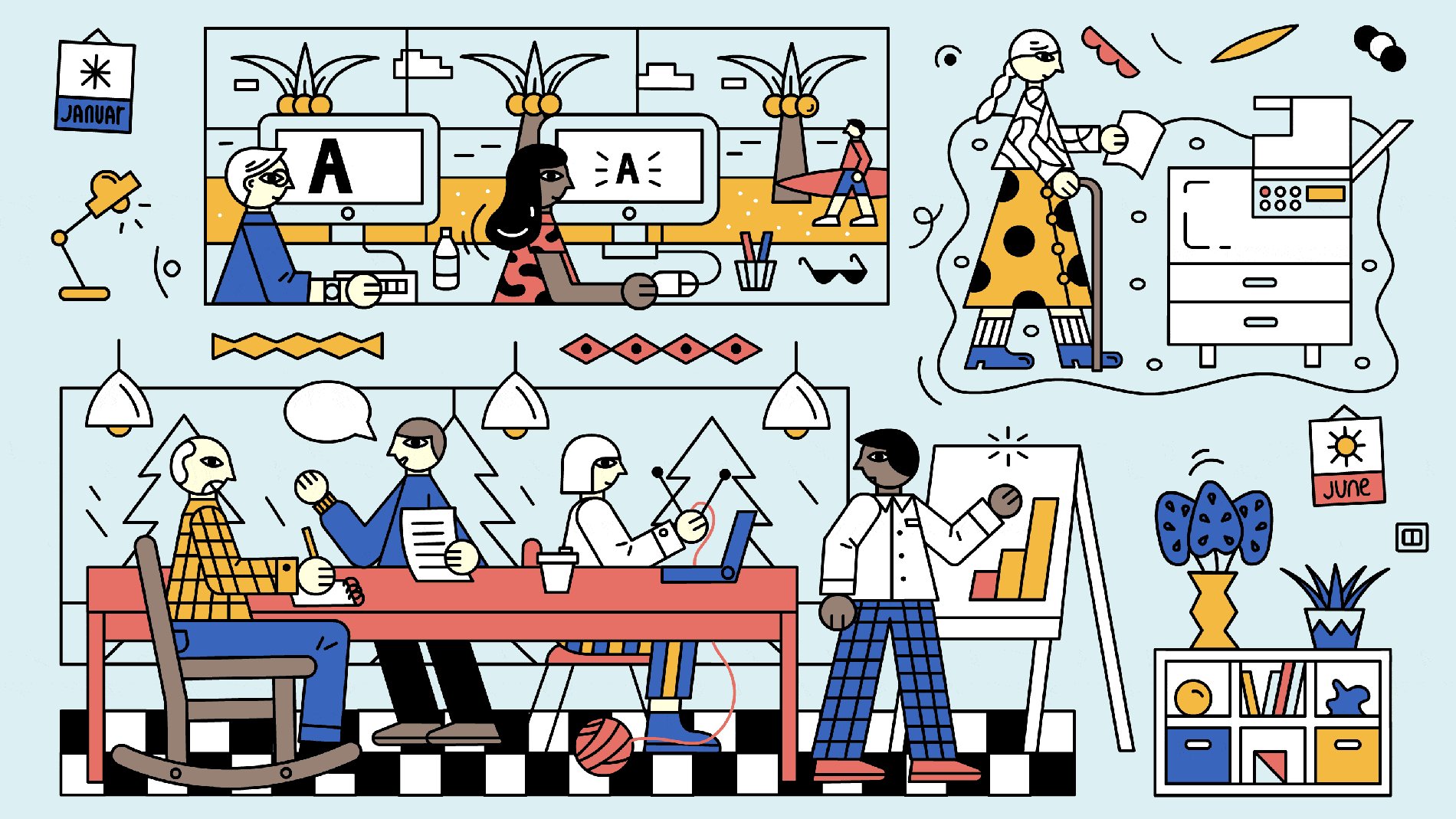December 10, 2018
The best office designs of 2018, the future of work in 2019, and some other clickbait
 This week’s beachcomb of the best workplace stories is brought to you in the wake of the first flood of retrospectives and predictions that wash up in the media at this time of year. The first piece of flotsam [sound of a metaphor snapping] is Dezeen’s listing of the world’s best office designs of 2018, which appears to be based on the answers to three questions. Is it a coworking space? Does it look like an office? Is there anybody actually working there? Answer yes, no, no to those three simple questions and you’re in the frame.
This week’s beachcomb of the best workplace stories is brought to you in the wake of the first flood of retrospectives and predictions that wash up in the media at this time of year. The first piece of flotsam [sound of a metaphor snapping] is Dezeen’s listing of the world’s best office designs of 2018, which appears to be based on the answers to three questions. Is it a coworking space? Does it look like an office? Is there anybody actually working there? Answer yes, no, no to those three simple questions and you’re in the frame.
It’s perhaps harsh to pick on just one media title, given the numbers of them up to this sort of thing, but Dezeen is as good a target as any given its vast readership and influence. They can take it. This piece typifies the great apex fallacy of office design and the lazy thinking that equates a Corian counter top and exposed building services with effective design. Form follows function may well be a hackneyed idiom but a large part of the office design trade press seemingly doesn’t believe a word of it.
Diving in
If you want to answer the question of what really make an office work, you have to dive into another pool of knowledge. There you’ll find this round-up of 2018’s Workplace Trends conference, this sober and informed take on the matter by Stephen Bevan and the latest Leesman Index, which draws on masses of data and asks impertinent questions such as Can the workplace industry ever embrace evidence-based design systems?
It’s a good question and one not restricted to an industry that can (and does) equate a ping pong table with cool. The Oxford Review has just asked it of the HR profession. although I wouldn’t be too sure of the author’s premise that it’s only HR that isn’t making decisions while immersed in a sea of facts and data. It strikes me that most sectors have their own propensity to not use evidence as much as they might, or even bristle when faced with evidence that goes against their most widespread and reassuring assumptions and prejudices.
Opening ourselves up to evidence means not only being prepared to discard our own opinions and preconceptions but also allowing ourselves to being bored shitless by the absorption of the evidence in the first place. Take this new report from the OECD, which questions the way we address issues like wellbeing and inequality in both economic and social terms. Its editor is Joseph Stiglitz, one of the hundred most influential people in the world in 2011 according to Time magazine, so it carries some intellectual and verbal heft.
Even if you can’t summon up the will to wade through it, it at least shows that these are difficult, complex, sometimes uncomfortable and often intractable questions. Yet by the time they have been filtered through our media systems, and blocked by our own preferences for glib and digestible content, we are left with some clickbait about Five wellbeing trends businesses should look out for in 2019. Please stop.
Those damn Millennials
One ‘trend’ that won’t die off in the face of all evidence to the contrary is the notion that Millennials are about to transform the workplace. Last week we exposed one of the fallacies that underpin this idea; that such arguments don’t always account for life stages.
This week two pieces we’ve seen point out the other inconvenient truth that workplaces are getting older and more demographically diverse. Which means that the usual suppositions about Millennials could only be true if they were wiping out older workers like Cro-Magnons did Neanderthals.
The first piece from Quartz explores how firms are responding to the new era with programmes and working cultures tailored to the needs of different groups. The second from Corporate Rebels goes to the heart of the issue, highlighting the facts that challenge the standard suppositions about it.
Finally, something of an antidote to the easy future of work narratives that also clog up our feeds as well as a reminder that many of the trends we assume are new are not, that people don’t change as much as we’d assume across generations, that troubled times pass and that what now looks like magic to us is not much more than normal human progress. At the bottom of this story is Amanda Murray’s gentle film about a few of the people who had attended the World’s Fair in 1939.
Not featured amongst the film’s interview subject is Carl Sagan, one of my own personal heroes and a man inspired by the Fair to take up a career in science and become the author of one of the best books about rationalism and evidence, The Demon Haunted World. Evidence is not there just to help us make good decisions about work and workplaces, but how to view the world.














